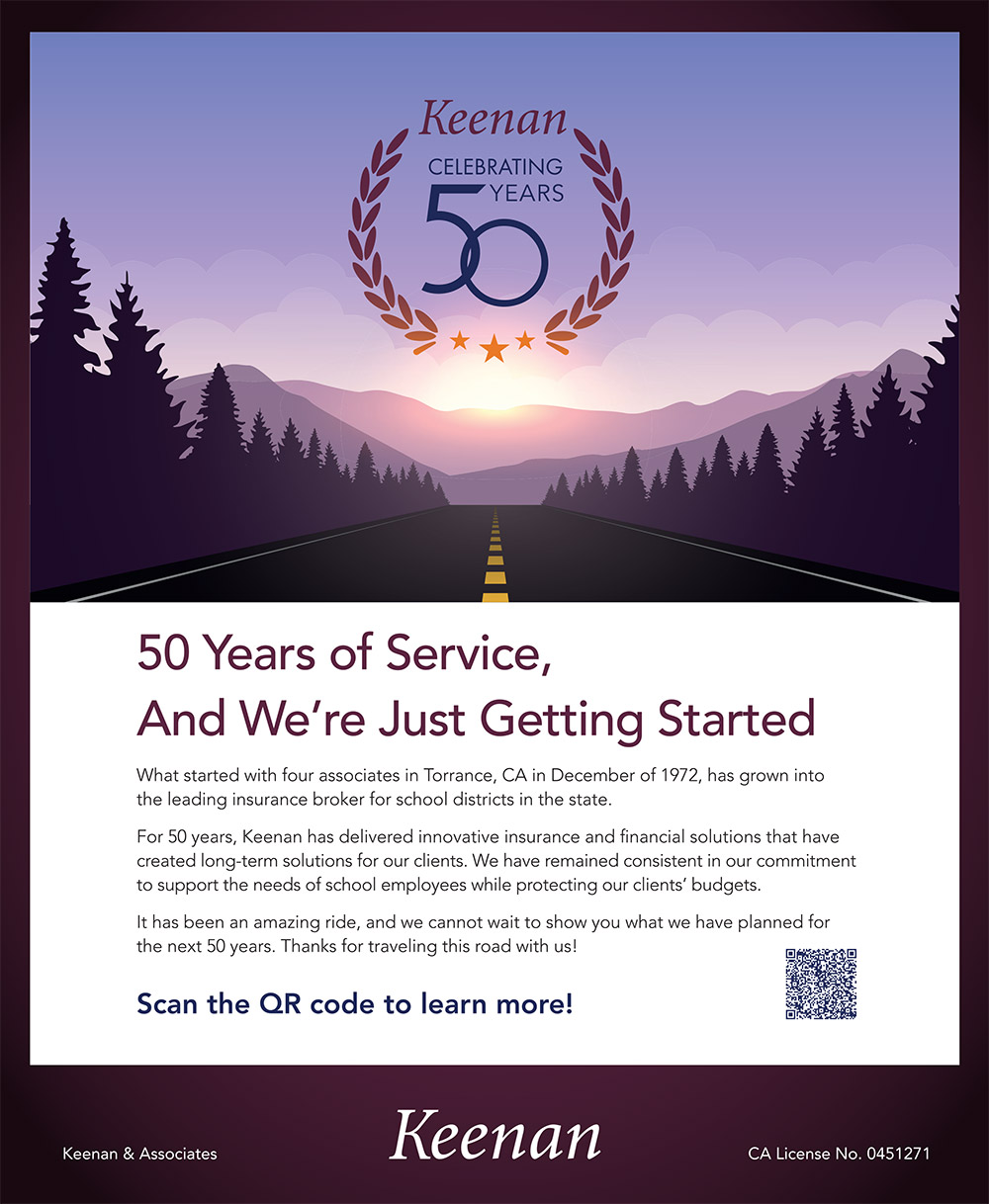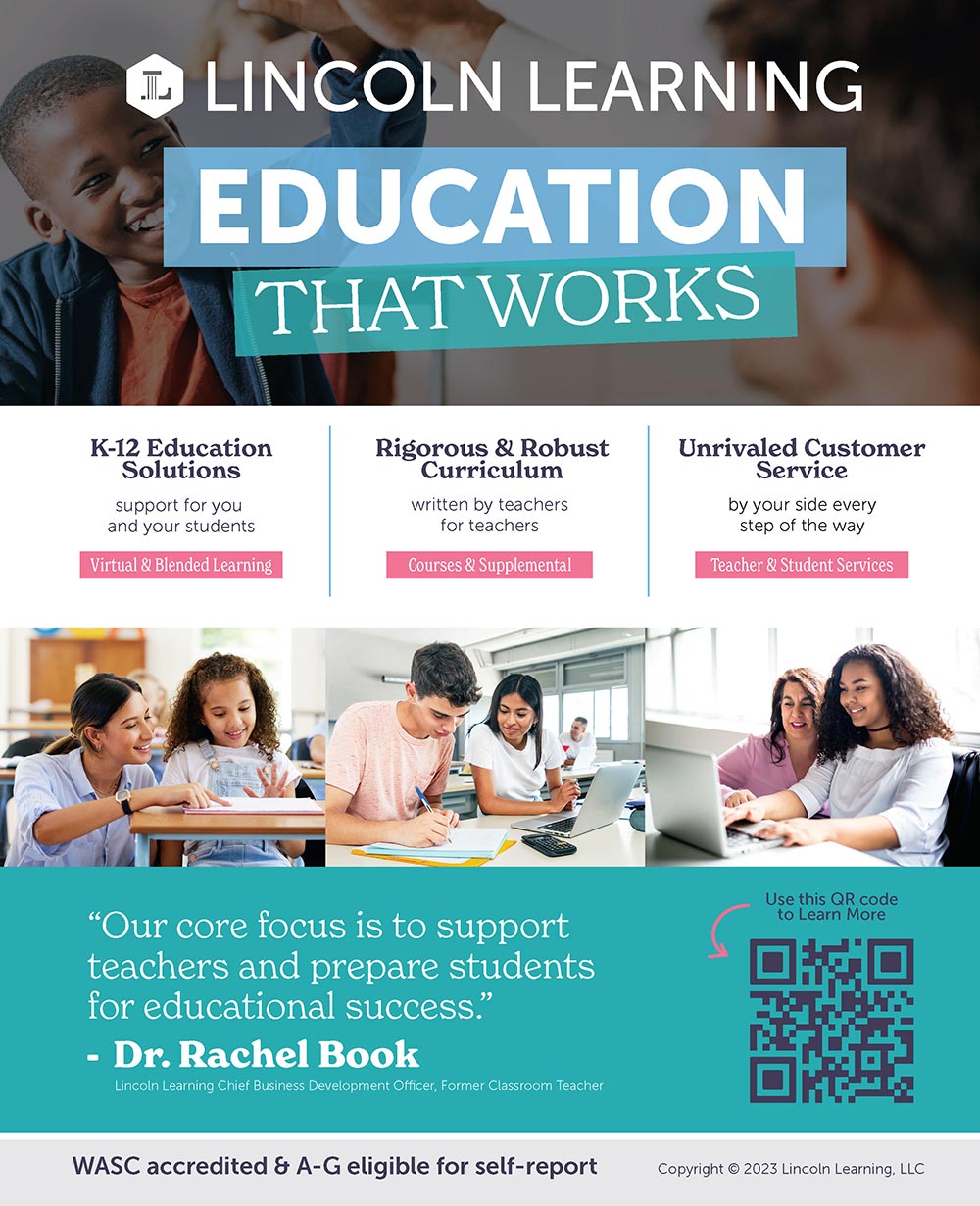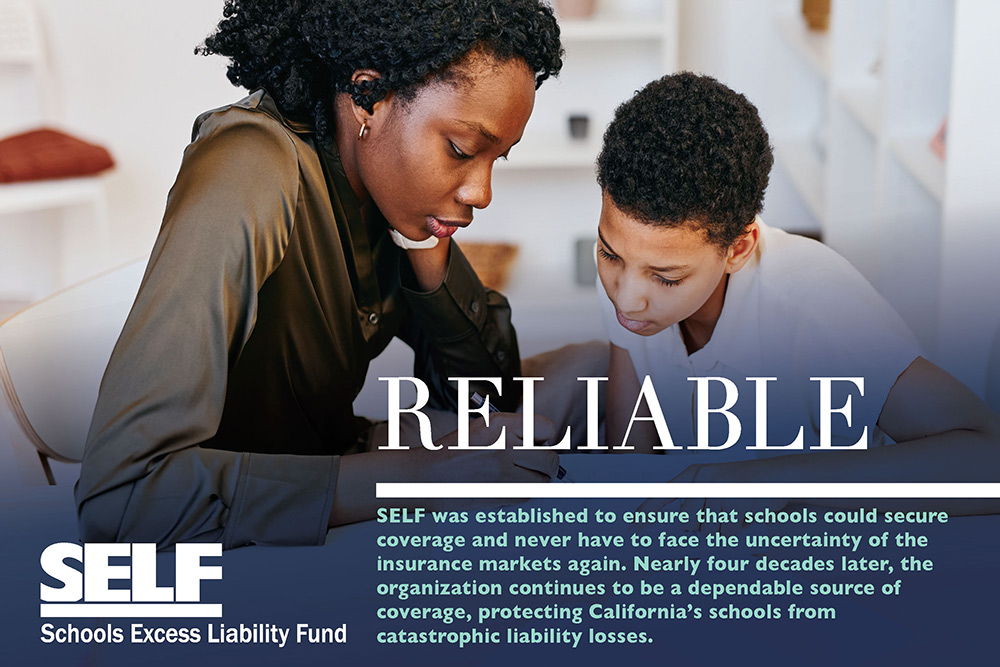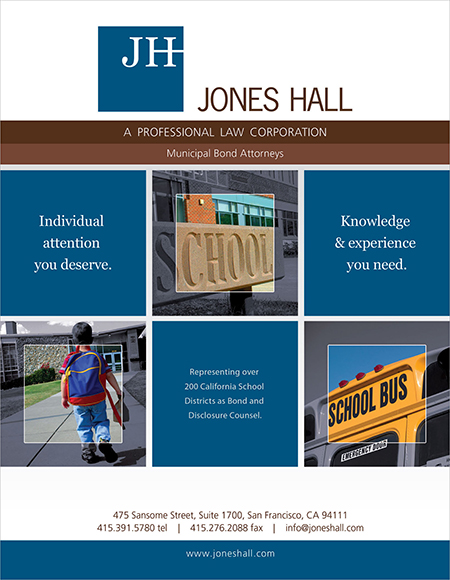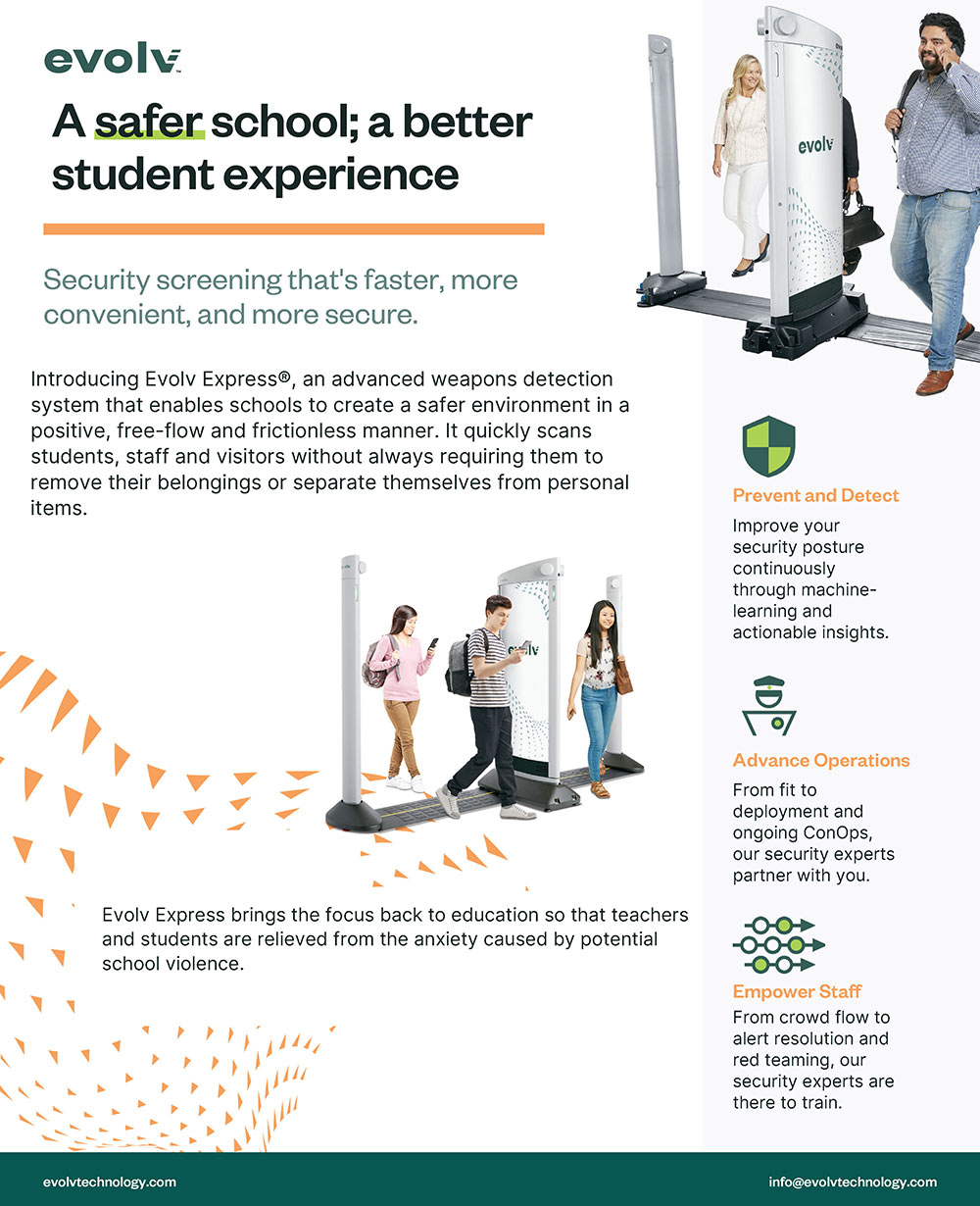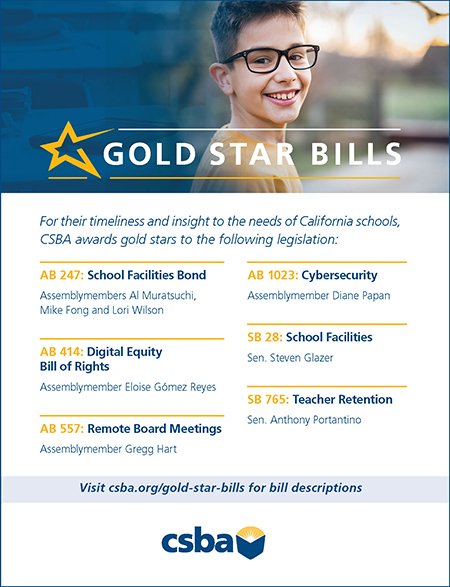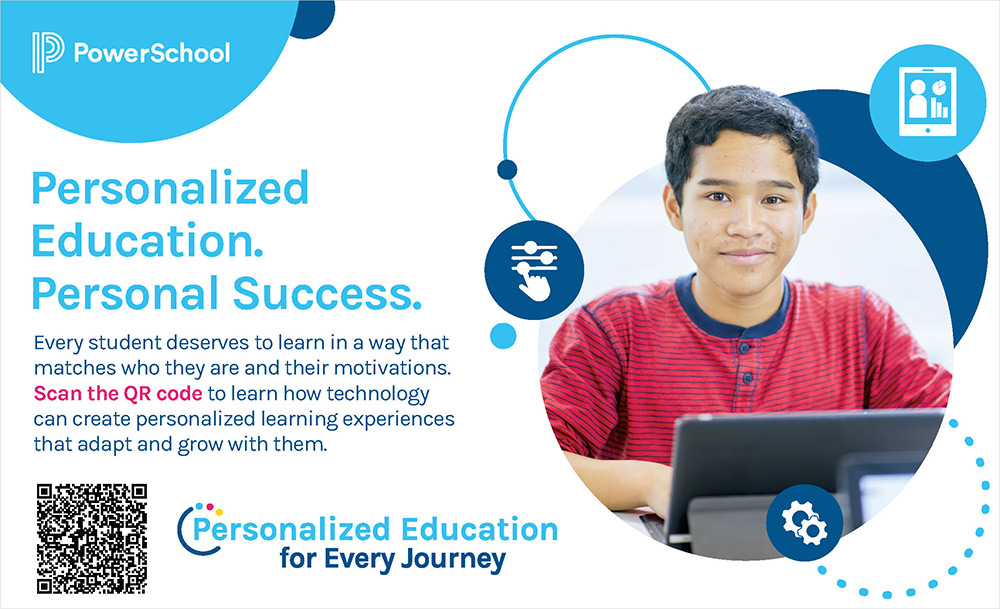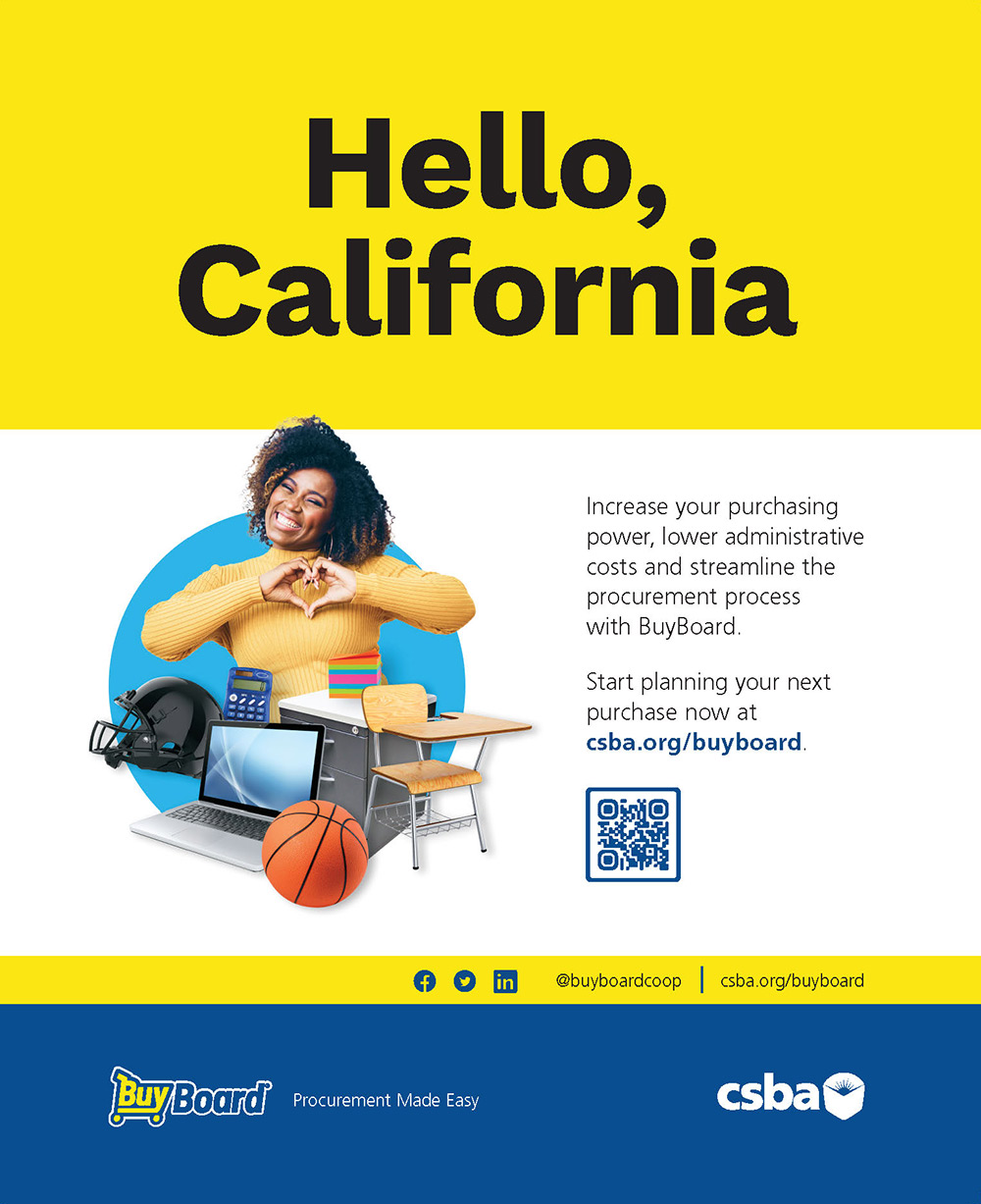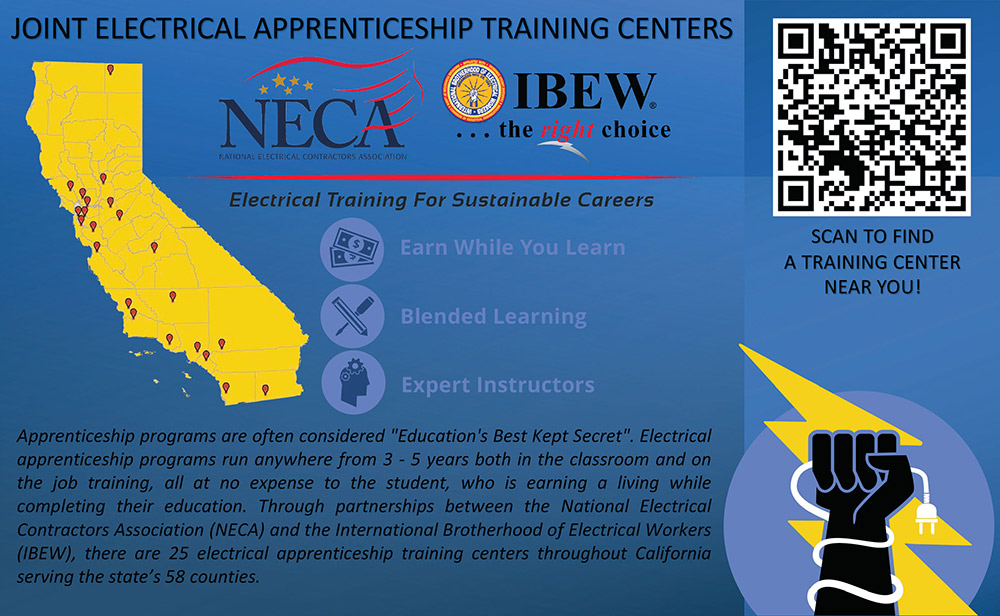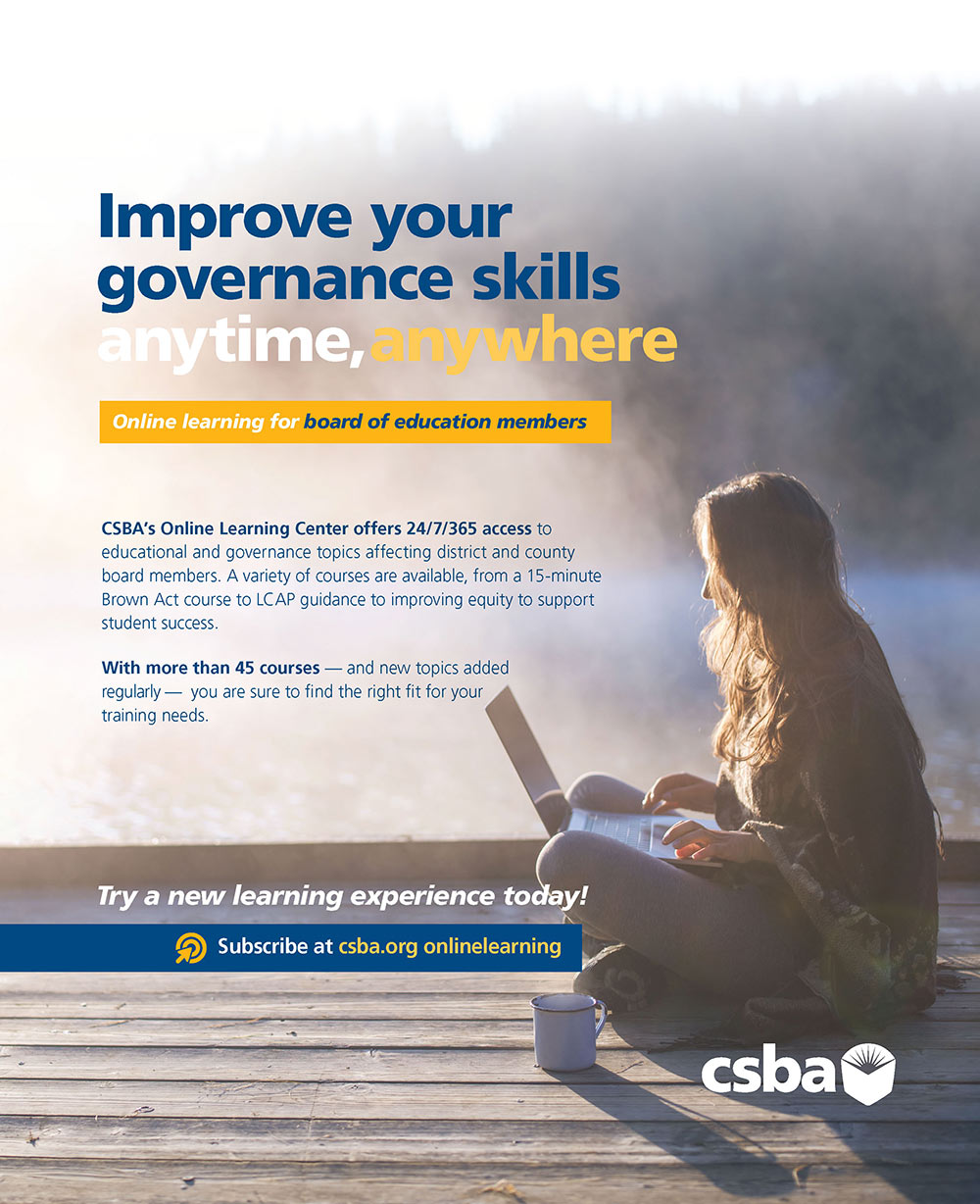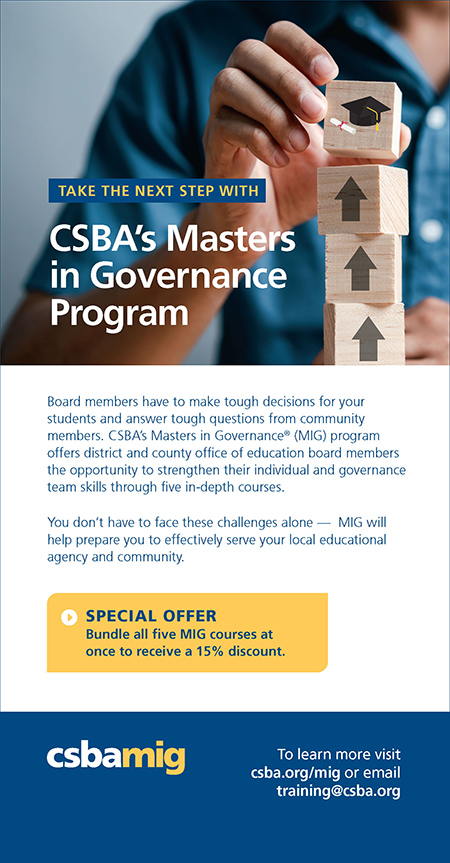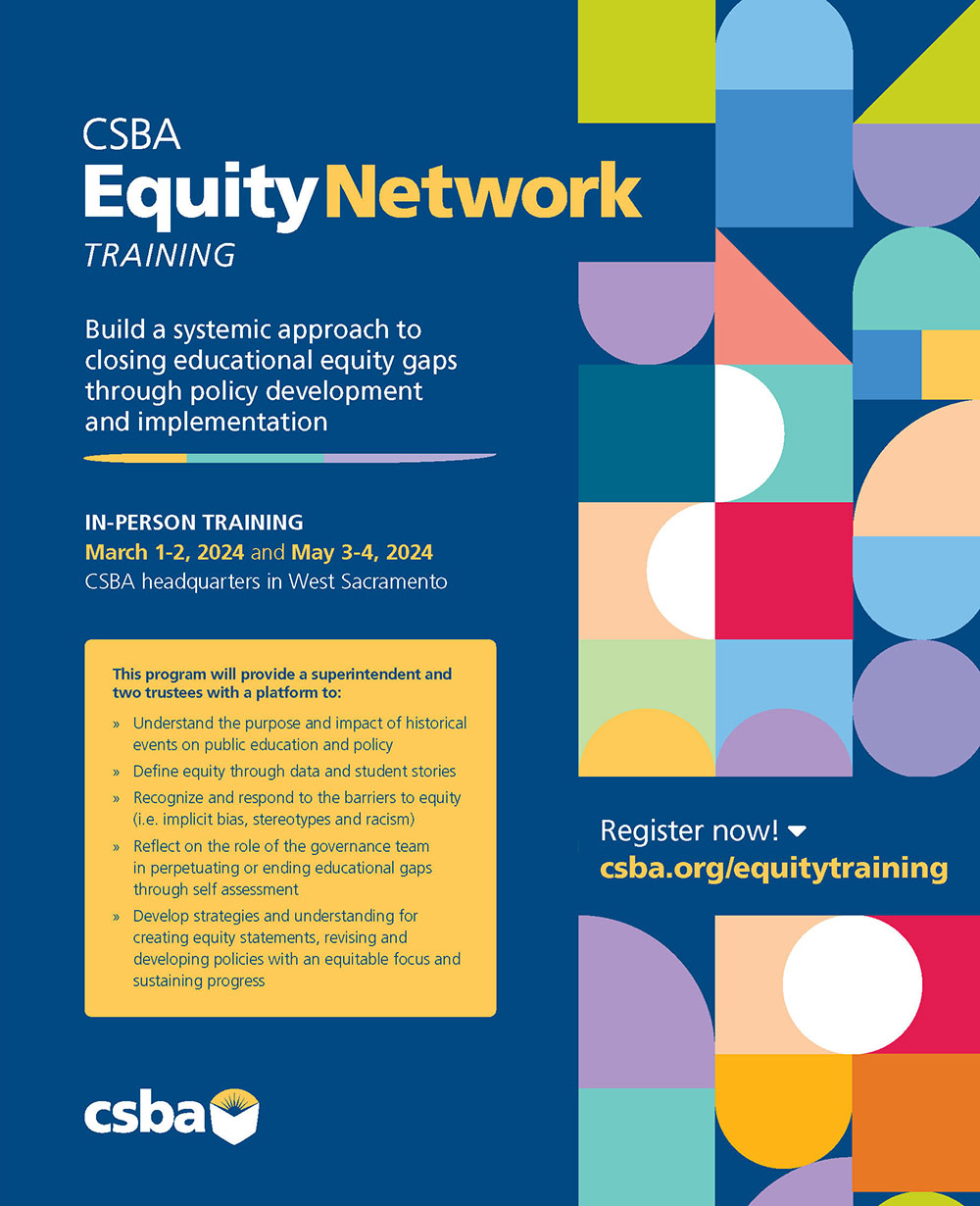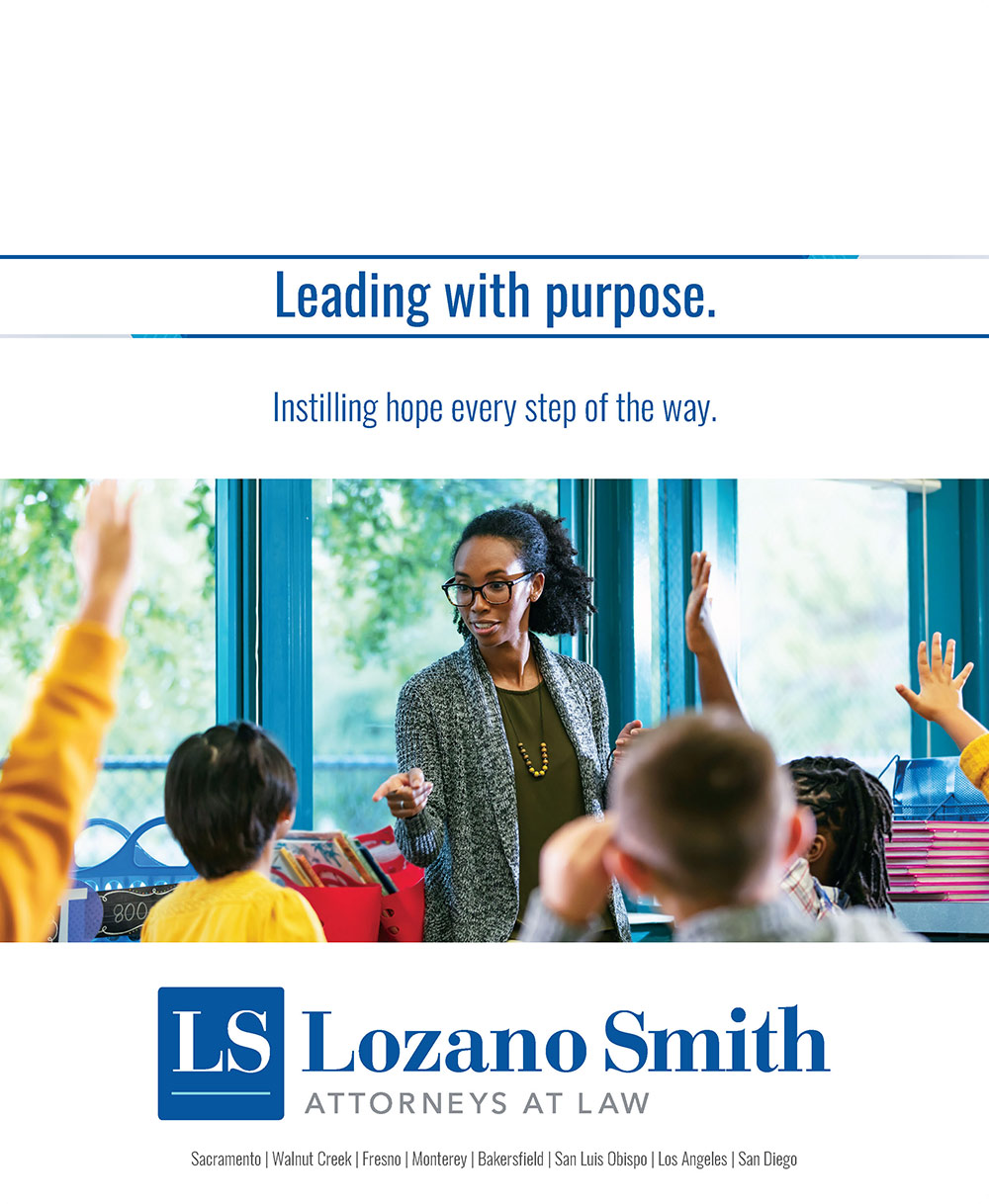
Fall 2023
The California School Boards Association is the essential voice for public education. We inspire our members to be knowledgeable leaders, extraordinary governance practitioners and ardent advocates for all students.
A new generation of board members are bringing fresh perspectives to governance teams
by Alisha Kirby
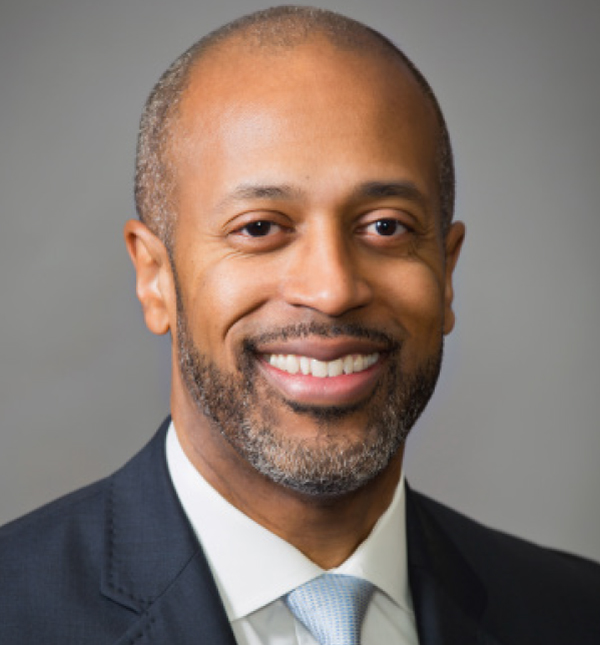
CEO’s note
n March 4, 1861, President Abraham Lincoln gave his first inaugural address to the people of the United States. Several months earlier, Lincoln had prevailed in a four-way contest with a substantial electoral college victory, but also one in which he lost every southern state and captured less than 40 percent of the popular vote. Five weeks after Lincoln’s election, South Carolina would secede from the union, soon to be followed by six additional states.

Region 1, Del Norte County USD
Sherry Crawford
Region 2, Siskiyou COE
David Gracia
Region 3, Napa Valley USD
Renee Nash
Region 4, Eureka Union SD
Alisa MacAvoy
Region 5, Redwood City ESD
Jackie Wong
Region 6, Washington USD
James Aguilar
Region 7, San Leandro USD
Christopher “Kit” Oase
Region 8, Ripon USD
Roger Snyder
Region 9, Scotts Valley USD
Region 10, Caruthers USD
Sabrena Rodriguez
Region 11, Ventura USD
William Farris
Region 12, Sierra Sands USD
Susan Henry
Region 15, Huntington Beach Union HSD
Karen Gray
Region 16, Silver Valley USD
Debra Schade
Region 17, Solano Beach SD
Bruce Dennis
Region 18, Riverside COE
Devon Conley
Region 20, Mountain View Whisman SD
Tanya Ortiz Franklin
Region 21, Los Angeles USD
Nancy Smith
Region 22, Palmdale SD
Region 23, Walnut Valley USD
Jan Baird
Region 24, South Whittier ESD
Chris Clark
Director-at-Large African American, Folsom-Cordova USD
Christina Cameron-Otero
Director-at-Large American Indian, Needles USD
Sylvia Leong
Director-at-Large Asian/Pacific Islander, Cupertino Union SD
Michael Teasdale
Director-at-Large County, Ventura COE
Joaquín Rivera
Director-at-Large Hispanic, Alameda COE
Gina Cuclis
CCBE President, Sonoma COE
Region 1, Del Norte County USD
Sherry Crawford
Region 2, Siskiyou COE
David Gracia
Region 3, Napa Valley USD
Renee Nash
Region 4, Eureka Union SD
Alisa MacAvoy
Region 5, Redwood City ESD
Jackie Wong
Region 6, Washington USD
James Aguilar
Region 7, San Leandro USD
Christopher “Kit” Oase
Region 8, Ripon USD
Roger Snyder
Region 9, Scotts Valley USD
Kathy Spate
Region 10, Caruthers USD
Sabrena Rodriguez
Region 11, Ventura USD
William Farris
Region 12, Sierra Sands USD
Susan Henry
Region 15, Huntington Beach Union HSD
Karen Gray
Region 16, Silver Valley USD
Debra Schade
Region 17, Solano Beach SD
Bruce Dennis
Region 18, Riverside COE
Devon Conley
Region 20, Mountain View Whisman SD
Tanya Ortiz Franklin
Region 21, Los Angeles USD
Nancy Smith
Region 22, Palmdale SD
Helen Hall
Region 23, Walnut Valley USD
Jan Baird
Region 24, South Whittier ESD
Chris Clark
Director-at-Large African American, Folsom-Cordova USD
Christina Cameron-Otero
Director-at-Large American Indian, Needles USD
Sylvia Leong
Director-at-Large Asian/Pacific Islander, Cupertino Union SD
Michael Teasdale
Director-at-Large County, Ventura COE
Joaquín Rivera
Director-at-Large Hispanic, Alameda COE
Gina Cuclis
CCBE President, Sonoma COE
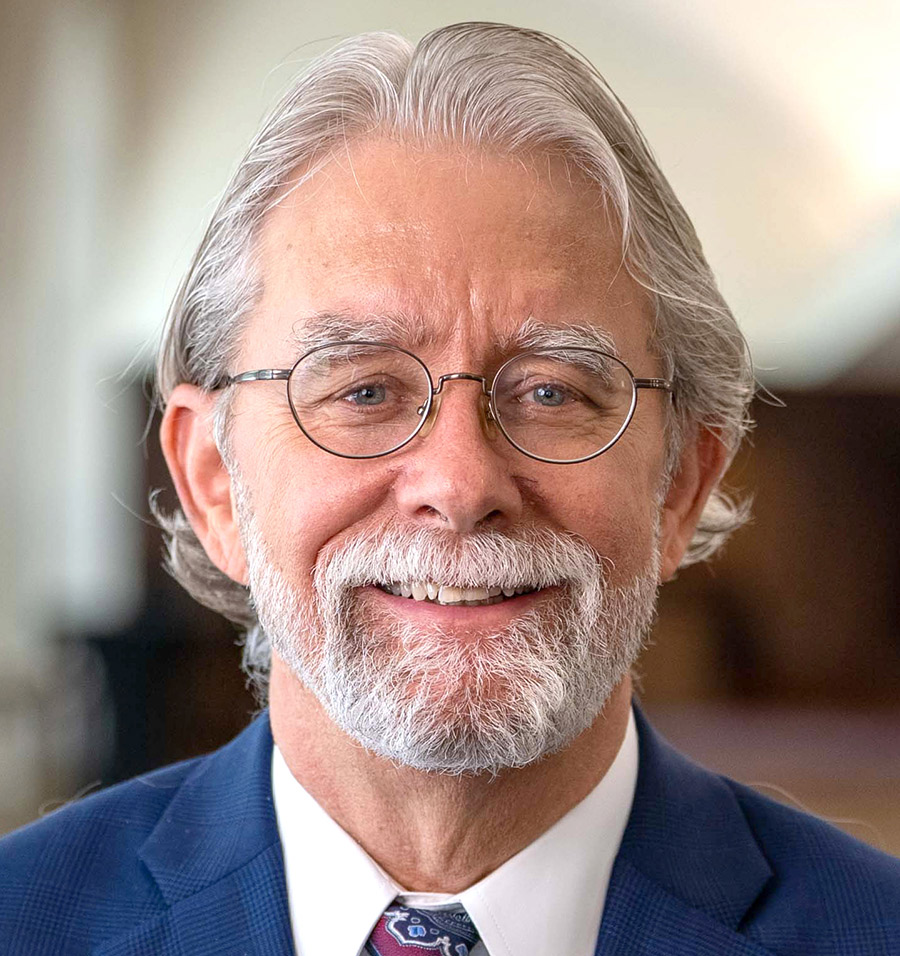
legal insights
The state pushes back on school board authority and local control
e are living in a very divisive time. When schools were shut down during the state of emergency in response to California’s COVID-19 health guidances, many parents and members of the public discovered local school board meetings and found their voices by expressing their concerns.
Objections to students missing in-person instruction were loud — increasing when some schools remained closed longer than others — and objections to students wearing masks when they returned were even louder. Had Gov. Gavin Newsom’s proposal to vaccinate students against COVID-19 once the vaccine had been approved not been taken off the table, objections at board meetings after the school year began would have been deafening.

Chief Information Officer
Troy Flint, tflint@csba.org
Editorial Director
Kimberly Sellery, ksellery@csba.org
Staff Writers
Heather Kemp, hkemp@csba.org
Alisha Kirby, akirby@csba.org
Director of Graphic Design and Branding
Kerry Macklin, kmacklin@csba.org
Senior Graphic Designer
Amanda Moen, amoen@csba.org
Circulation and Advertising
csba@csba.org
Susan Markarian, Pacific Union ESD
President-elect
Albert Gonzalez, Santa Clara USD
Vice President
Dr. Bettye Lusk, Monterey Peninsula USD
Immediate Past President
Dr. Susan Heredia, Natomas USD
CEO & Executive Director
Vernon M. Billy
Articles submitted to California Schools are edited for style, content and space prior to publication. Views expressed are those of the authors and do not necessarily represent CSBA policies or positions. Articles may not be reproduced without written permission of the publisher. Endorsement by CSBA of products and services advertised in California Schools is not implied or expressed.

class act Best practices in action
Best practices in action

class act
Best practices in action


The district’s innovative STEM CARES (Science, Technology, Engineering and Mathematics Cultivates Active Responsible Environmental Stewards) program establishes climate change innovation through environment-based learning experiences that address climate justice, promote awareness of the effects of global climate change in local communities and engage students in creative solutions.
STEM CARES began in 2015 as a grassroots student organization that allows young people to act as volunteers, advocates and activists, raising awareness and taking action on climate-related challenges important to them. Now, the program is a districtwide effort that utilizes local, relevant environmental issues to inspire students to think globally and act locally to improve their community and planet by conserving natural resources, reducing operational impacts, and protecting the health of students, staff and the community.

In this special board member profile, CSBA is highlighting a duo dedicated to improving education in Shasta County, Robert and Joshua Brown. This father and son illustrate how civic engagement can be passed down through generations and inspire new young leaders. At 19 years old, Joshua was elected to the Shasta Union Elementary School District Board of Education in November 2022. He is one of the youngest trustees in the state — and he brings valuable perspective. Joshua has autism and returned to the school district he once attended with hopes of cultivating a more inclusive and supportive school environment. Robert has served on the board of the Shasta County Office of Education since 2018 and was inspired to run for the position through his experiences helping Joshua navigate the school system and his involvement in the Shasta County Special Education Local Plan Area (SELPA).
Robert: I’m in my fifth year as a trustee on the Shasta County Board of Education (SCOE). I have been on the Community Advisory Committee (CAC) for the Shasta SELPA for more than 10 years. I’ve been the CAC chair for the past eight years. I was inspired to run for the board position by my experiences on the CAC. During my tenure there, I discovered that SCOE was very influential at providing services to the special education student community and I wanted to expand my influence beyond advising the SELPA to creating policies that have a lasting impact. I encourage all parents to run for their local school board; you cannot make a difference from the sidelines.
Joshua: I was sworn in on Nov. 7, 2022, so it’s early in my first term. I was inspired to run by my dad — he’s served on the county board for five years and in that time, he’s helped special education, set up mental health care and social-emotional learning; it’s beautiful. I was also inspired to run by Marco Amaral, a socialist special education teacher and trustee from San Diego who ran for California State Superintendent of Public Instruction in the 2022 primary and got 10 percent of the vote. His platform was very inspiring, empowering and just spot-on.
What is one major concern you hope to address as a board member?
Joshua: Equity — everyone getting what they need in order to be successful, rather than everyone getting the same cookie-cutter thing, so that quality education can be a right for real and not just on paper. I think every student should have an individualized education program (IEP) not just disabled students.
Robert: The principal problem with the education system today is that we tend to attempt to homogenize student achievement. Cookie-cutter educational policies create a culture where some students excel, while other students get abandoned. I hope that the policies I help develop prevent any student from being abandoned.
Who inspired you growing up?
Robert: My mom, who dropped out of high school in the ninth grade, then insisted that all of her children stay in school until they received their high school diploma. She taught me that the most important lessons in life do not come from books, but from experience. My parents were both avid readers, and I learned early on that a book could take me places that I could barely imagine on my own.
Joshua: My mom, Lillian, who not only taught me how to get at the root of politics (John Lennon did that too) but struggles with complex post-traumatic stress disorder and told me not to let anybody tell me they’re better than me, or bully me, or push me around. She has helped me through some really rough times.
What are some unique challenges rural districts face and how are your boards working to address these challenges?
Robert: Access to the internet is a big challenge in rural areas. Shasta County Office of Education is part of the California High Speed Network program. The state supplies us with a very fast connection to the internet to our building free of charge. We are, in turn, responsible to staff and purchase the equipment that can then make the internet connection available to all of our districts. We also provide internet filtering and these districts pay a fee to help offset the cost of the equipment and staffing. We currently have all of our districts in the county connected to the internet through our office. That is a program that SCOE can take on that a small rural district cannot afford. We are pleased to be able to provide this service to our rural districts.
How have your experiences as a student receiving special education services, and a parent of a student, influenced how you think about education policy?
Joshua: It’s pretty much influenced my entire outlook. For starters, as an autistic student, I had an IEP. For example, I needed social-emotional learning that I didn’t get in order to be able to be in the classroom — and as a result of not getting it, I’m struggling to socialize today, just like then. We also need to grade for equity. Every student is different and unique, and they should be able to engage with education in any way they see fit — they are not a cog in the machine.
Robert: We don’t have room in this magazine for the complete answer to that question. The short answer is that I don’t expect that the system will always work in favor of the student, parent or family. My goal is for the SCOE board to help schools understand their role in helping families create a culture of learning for their kids and adopt policies that recognize that we must help them address Maslow [hierarchy of needs] barriers before we can employ Bloom educational objectives. Grading for equity, social-emotional learning and mental health programs are essential to that process.
What are some promising practices taking place in your district?
Joshua: My dad’s work on the county office of education board has made community schooling Shasta County’s signature accomplishment, but for my own one-school district, I am quite proud of the progress we’ve made since I went to school there. We now have social-emotional learning practices where kids are making friends and talking out their feelings, which makes learning possible. We recently hired a new, extremely qualified second-grade teacher, recruited a special education teacher and a new librarian — we’re very well staffed.
Would you like to participate in an upcoming Member Profile? Contact us at editor@csba.org.

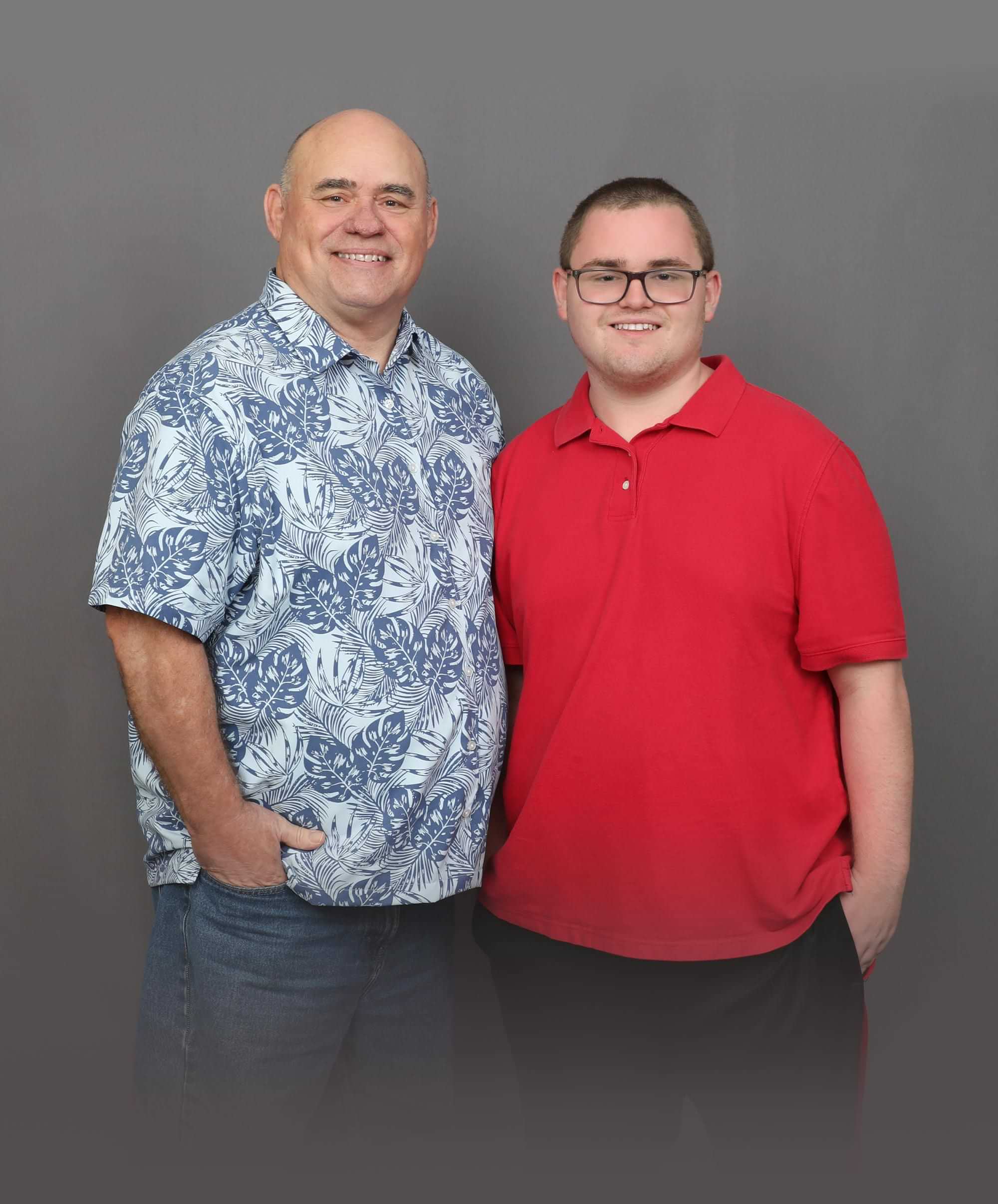
In this special board member profile, CSBA is highlighting a duo dedicated to improving education in Shasta County, Robert and Joshua Brown. This father and son illustrate how civic engagement can be passed down through generations and inspire new young leaders. At 19 years old, Joshua was elected to the Shasta Union Elementary School District Board of Education in November 2022. He is one of the youngest trustees in the state — and he brings valuable perspective. Joshua has autism and returned to the school district he once attended with hopes of cultivating a more inclusive and supportive school environment. Robert has served on the board of the Shasta County Office of Education since 2018 and was inspired to run for the position through his experiences helping Joshua navigate the school system and his involvement in the Shasta County Special Education Local Plan Area (SELPA).
Robert: I’m in my fifth year as a trustee on the Shasta County Board of Education (SCOE). I have been on the Community Advisory Committee (CAC) for the Shasta SELPA for more than 10 years. I’ve been the CAC chair for the past eight years. I was inspired to run for the board position by my experiences on the CAC. During my tenure there, I discovered that SCOE was very influential at providing services to the special education student community and I wanted to expand my influence beyond advising the SELPA to creating policies that have a lasting impact. I encourage all parents to run for their local school board; you cannot make a difference from the sidelines.
Joshua: I was sworn in on Nov. 7, 2022, so it’s early in my first term. I was inspired to run by my dad — he’s served on the county board for five years and in that time, he’s helped special education, set up mental health care and social-emotional learning; it’s beautiful. I was also inspired to run by Marco Amaral, a socialist special education teacher and trustee from San Diego who ran for California State Superintendent of Public Instruction in the 2022 primary and got 10 percent of the vote. His platform was very inspiring, empowering and just spot-on.
What is one major concern you hope to address as a board member?
Joshua: Equity — everyone getting what they need in order to be successful, rather than everyone getting the same cookie-cutter thing, so that quality education can be a right for real and not just on paper. I think every student should have an individualized education program (IEP) not just disabled students.
Robert: The principal problem with the education system today is that we tend to attempt to homogenize student achievement. Cookie-cutter educational policies create a culture where some students excel, while other students get abandoned. I hope that the policies I help develop prevent any student from being abandoned.
Who inspired you growing up?
Robert: My mom, who dropped out of high school in the ninth grade, then insisted that all of her children stay in school until they received their high school diploma. She taught me that the most important lessons in life do not come from books, but from experience. My parents were both avid readers, and I learned early on that a book could take me places that I could barely imagine on my own.
Joshua: My mom, Lillian, who not only taught me how to get at the root of politics (John Lennon did that too) but struggles with complex post-traumatic stress disorder and told me not to let anybody tell me they’re better than me, or bully me, or push me around. She has helped me through some really rough times.
What are some unique challenges rural districts face and how are your boards working to address these challenges?
Robert: Access to the internet is a big challenge in rural areas. Shasta County Office of Education is part of the California High Speed Network program. The state supplies us with a very fast connection to the internet to our building free of charge. We are, in turn, responsible to staff and purchase the equipment that can then make the internet connection available to all of our districts. We also provide internet filtering and these districts pay a fee to help offset the cost of the equipment and staffing. We currently have all of our districts in the county connected to the internet through our office. That is a program that SCOE can take on that a small rural district cannot afford. We are pleased to be able to provide this service to our rural districts.
How have your experiences as a student receiving special education services, and a parent of a student, influenced how you think about education policy?
Joshua: It’s pretty much influenced my entire outlook. For starters, as an autistic student, I had an IEP. For example, I needed social-emotional learning that I didn’t get in order to be able to be in the classroom — and as a result of not getting it, I’m struggling to socialize today, just like then. We also need to grade for equity. Every student is different and unique, and they should be able to engage with education in any way they see fit — they are not a cog in the machine.
Robert: We don’t have room in this magazine for the complete answer to that question. The short answer is that I don’t expect that the system will always work in favor of the student, parent or family. My goal is for the SCOE board to help schools understand their role in helping families create a culture of learning for their kids and adopt policies that recognize that we must help them address Maslow [hierarchy of needs] barriers before we can employ Bloom educational objectives. Grading for equity, social-emotional learning and mental health programs are essential to that process.
What are some promising practices taking place in your district?
Joshua: My dad’s work on the county office of education board has made community schooling Shasta County’s signature accomplishment, but for my own one-school district, I am quite proud of the progress we’ve made since I went to school there. We now have social-emotional learning practices where kids are making friends and talking out their feelings, which makes learning possible. We recently hired a new, extremely qualified second-grade teacher, recruited a special education teacher and a new librarian — we’re very well staffed.
Would you like to participate in an upcoming Member Profile? Contact us at editor@csba.org.
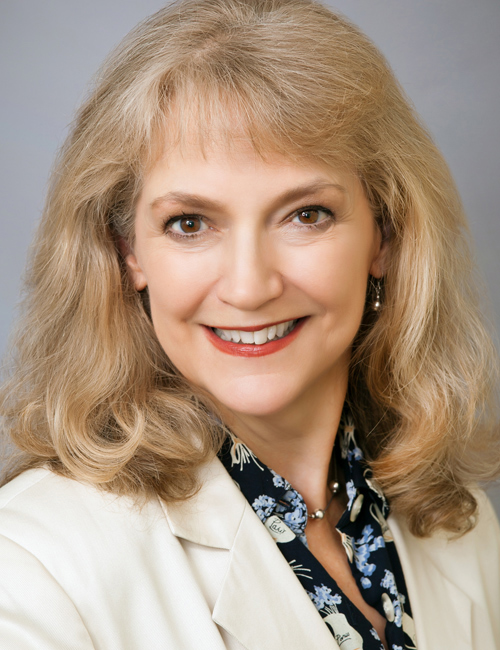

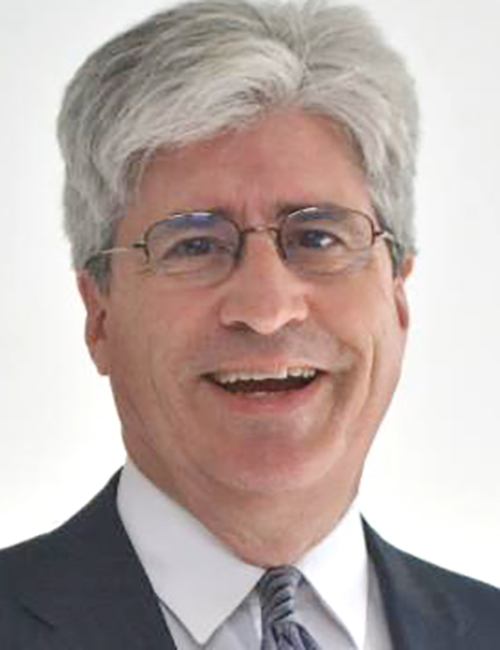
Monika: Governance agreements are structures that fortify each local educational agency’s ongoing game plan, which invariably includes long-term planning, sharing of team members’ values, striving to work well with administrators and working to cement trust with board colleagues. As individuals, we didn’t all grow up at the same table, meaning our backgrounds vary and make us unique. But we are all at the board table for the same reason: to continuously improve conditions for achievement for the students we serve.
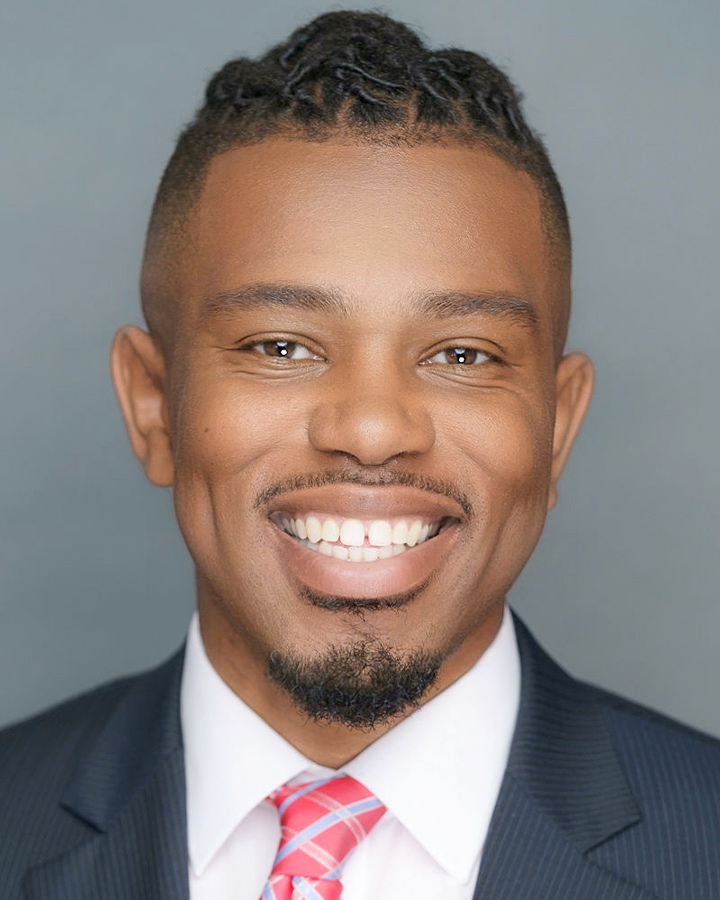
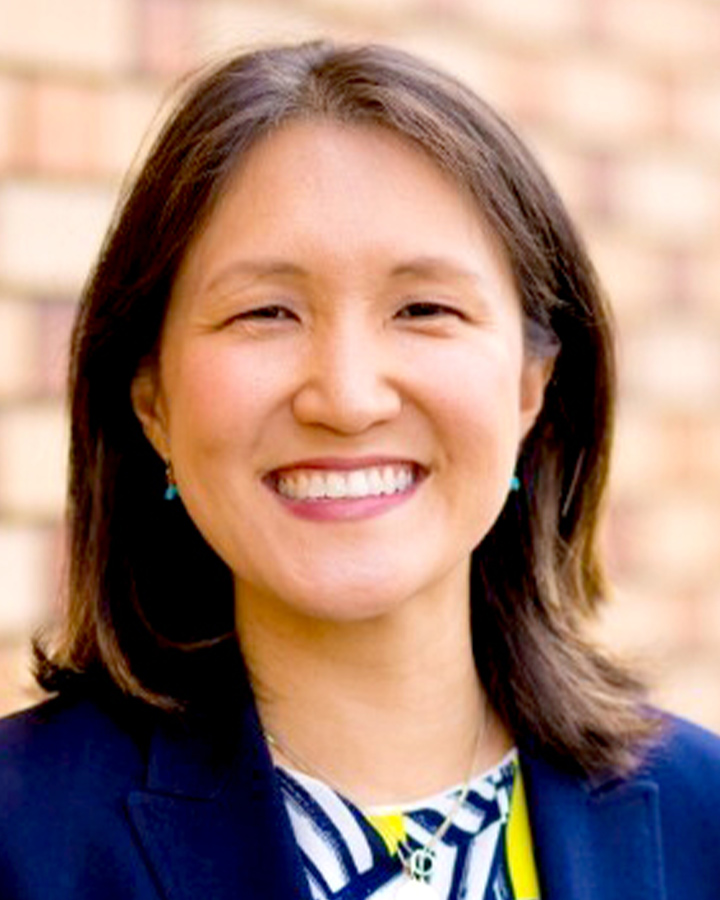
csba at issue
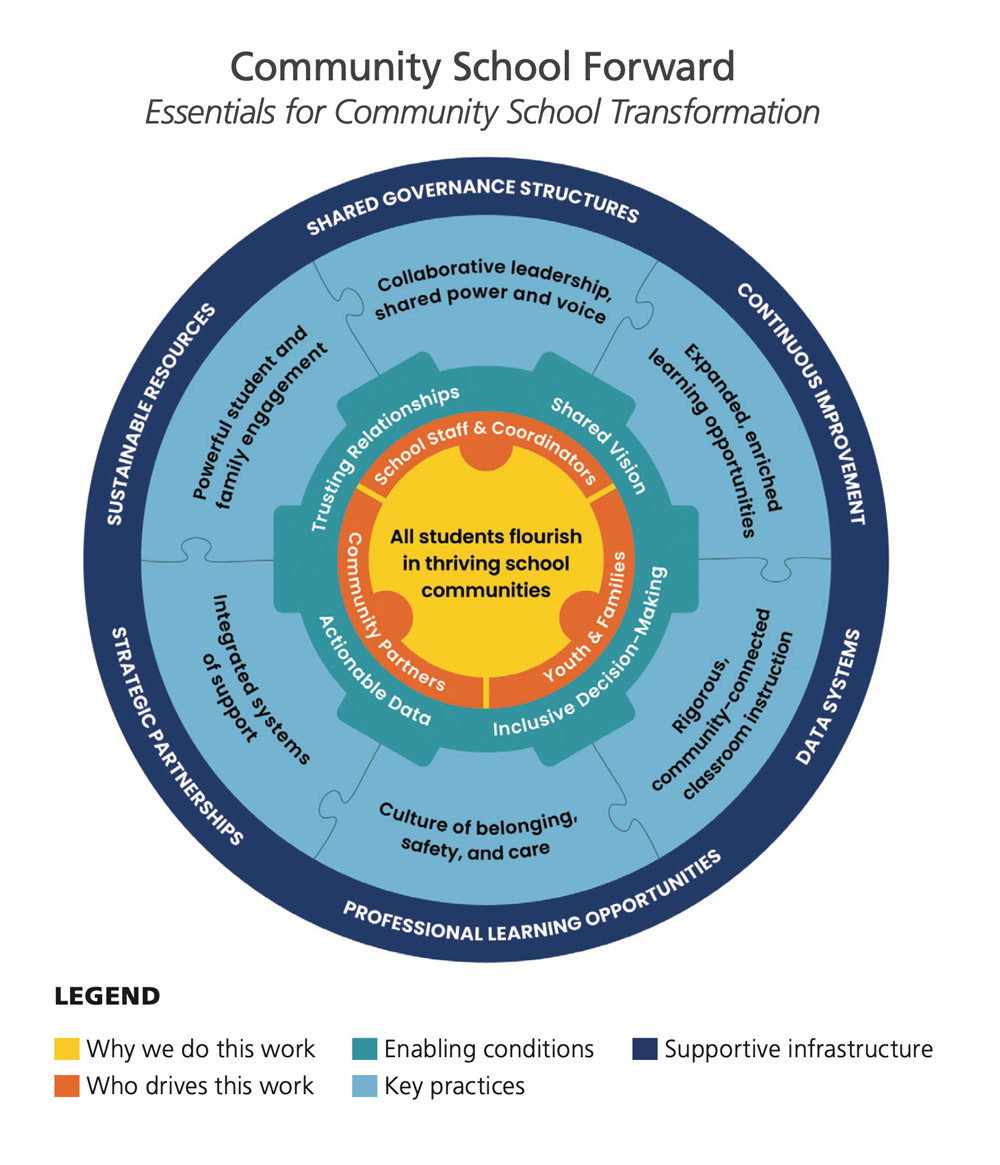
As communities have attempted to navigate an ever-evolving “new normal” in the wake of the COVID-19 pandemic, school leaders across California continue to wrestle with a series of major challenges. Even before school buildings closed in March 2020, there were persistent disparities in students’ experiences and outcomes.
The pandemic, along with heightened attention to racial injustices, helped to shine a spotlight on how fragmented systems and structures within schools hinder our ability to equitably provide whole-child growth and learning.
Recognizing the urgency of these challenges, state leaders have allocated billions of dollars to various “whole child” strategies, including funding to expand universal transitional kindergarten, expanded learning, dual enrollment and community schools. Since the passage of the California Community Schools Partnership Act in 2021, state legislators have allocated a total of $4.1 billion to the California Community Schools Partnership Program (CCSPP). This groundbreaking infusion of resources has been billed as an opportunity for districts and their communities to collaboratively design and implement community schools strategies.

from the field
alifornia school districts find themselves in a new era of education, building student global competencies such as multilingualism. Today’s more inclusive climate welcomes educational policies and increased program funding that embraces and supports multilingual education — a step away from the past, which too often promoted deficit-oriented language practices.


With many local educational agencies uncertain of how to proceed or what the law requires, CSBA is providing a chronology of the major developments that lead to this point as well a discussion that clarifies the obligations of schools within the context of state and federal law. The legal landscape for these issues is contested and constantly shifting but the current moment traces its roots back to end-of-summer conflicts in a few southern California school districts.

Advertorial
School districts are presently contending with challenging budgets and will continue to do so in coming years. Reductions in state funding, reserve caps, rising CalSTRS/CalPERS contribution rates, salary inflation, declining enrollment and the “fiscal cliff” are leading districts statewide to consider ways to reduce costs now and/or in the future. However, approaches like reductions in force (RIF) are often disruptive and have a negative impact on employees and their families. Instead, districts should consider creating savings through a locally designed early retirement incentive.
For nearly 40 years, PARS has helped districts analyze, design, and implement strategic early retirement incentive solutions through its Supplementary Retirement Plan (SRP). A PARS SRP can help districts reduce costs by encouraging employees to voluntarily retire or separate from their district. Moreover, it can simultaneously reward valued long-term employees for their significant contributions to the district. By implementing SRPs with nearly 400 school districts throughout California, PARS has helped them to reduce costs, restructure departments, and hire new staff to fulfill current goals and priorities, all while providing a “win-win” situation for both the districts and their employees.
Young
Leaders
Step Up
A new generation of board members are bringing fresh perspectives to governance teams
By Alisha Kirby
A typical 18-year-old is likely to be enrolled in college or a certification program, working a low-wage job, and focusing on hanging out with friends while keeping up with various responsibilities.
At 18-years-old, Sathvik Nori and Triston Ezidore were doing much of the same, while also running their first successful campaigns for local school boards. These trustees, along with another young board member, Noel Mora, represent a growing trend of board of education members under the age of 30 who are working to ensure students not much younger than themselves have all the opportunities they had — or in some cases, wish they’d had.
These three share the same passion for improving outcomes as their older counterparts, but unlike many established board members, these young trustees are often the first to have attended schools in the districts they now help govern.
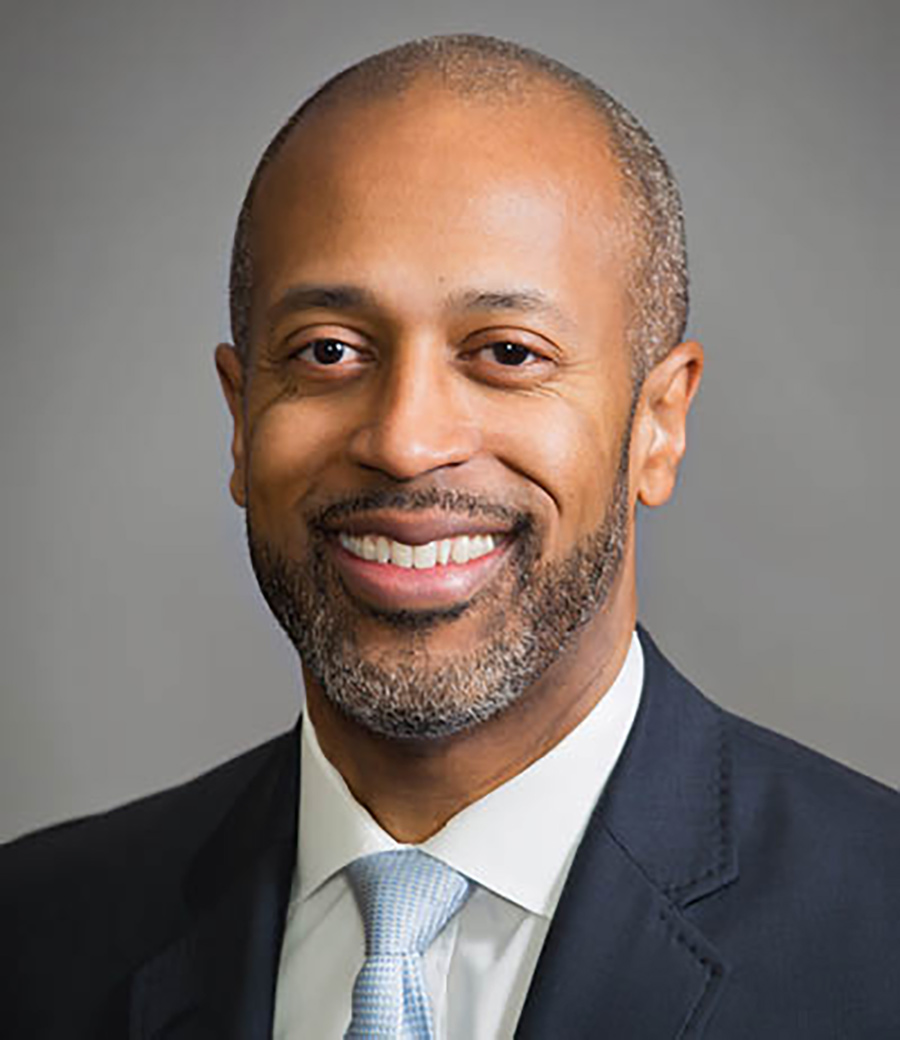

The most visible way in which CSBA supports members is through a combination of state and federal legislative advocacy, fighting to pass bills that will aid board members in their governance responsibilities and to defeat legislation that would be harmful to public schools. We also engage in extensive legal advocacy to support LEAs who are engaged in litigation of widespread import to California public schools. We are also recognized as the premier provider of training and professional development options for board members and governance teams. More than 90 percent of the LEAs in the state use GAMUT Policy services to access our sample board policies and administrative regulations to aid in their governance role. CSBA also produces original and groundbreaking research on issues of critical importance to LEAs and partners with businesses that serve public schools to make them more accessible and affordable.

Thanks for reading our Fall 2023 issue!










